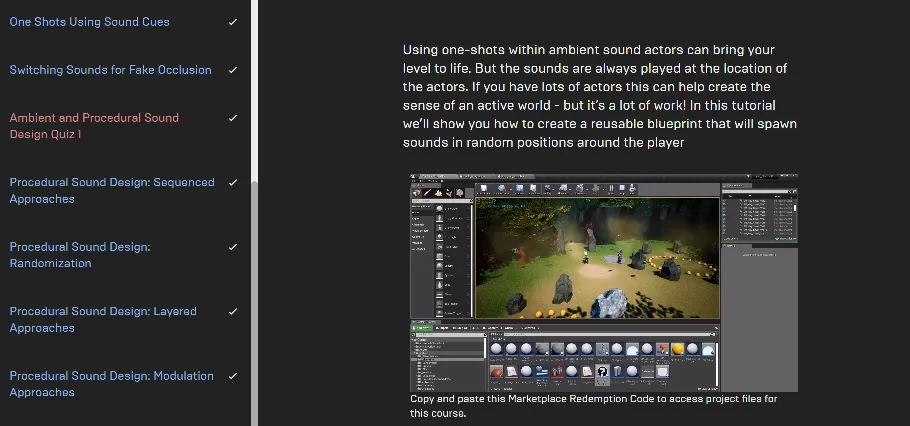It took me a little while but I've finally completed the fourth course of the current competition to learn Unreal Engine. Just one more course left.
I never realized until now how much thought and effort goes into the sound effects of video game design. I understood how like a movie studio has foley artists a game studio would want some kind of audio artist to create certain tones and sounds to help establish certain moods and psychological reactions. It's not quite like a movie though because the pace of a game can be variable so the background music of a level and the timing of sound events would also need to be varied by the same amount.
There are other issues like having a sound outside of a building. If a character goes inside a building the outside noise shouldn't bleed through the building's walls. Being able to control a sound's range in a virtual environment is so important in making the experience more immersive for the player.

Image Source: unrealengine.com
Mostly the course focused on procedural sound design. This helps to manage how much memory a game's audio assets take up and how many active sound files are used by the game. A lot of this was shown to be done using nodes in the blueprint function. By varying less than a dozen sound clips thousands of random variations for a sound effect can be made. Usually this increase in orders of magnitude only adds about twice the memory so instead of maybe half a megabyte it's a little more than a megabyte.
